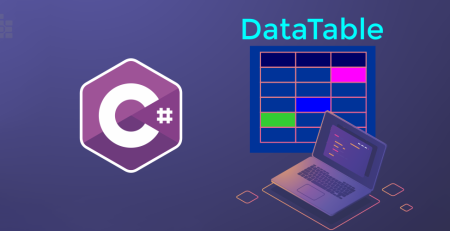JavaScript forEach: Transformative Iteration Strategies and Tackling Limitations
Table of Contents
Introduction
JavaScript is a versatile programming language, and one of its powerful features is the ability to work with arrays and collections efficiently. When it comes to iterating over array elements, the forEach method is a commonly used higher-order function. In this blog post, we’ll explore the intricacies of forEach in JavaScript and discuss various techniques to handle and potentially stop its iteration.
Certainly! Let’s delve into the basics of the forEach method in JavaScript.
Understanding forEach in JavaScript
JavaScript, as a versatile programming language, offers a variety of tools for working with arrays. Among these tools is the forEach method, a higher-order function that simplifies the process of iterating over array elements.
Syntax
The syntax of forEach is straightforward:
array.forEach((element, index, array) => {
// Your code here
});Here, array is the array you want to iterate over, and the callback function, (element, index, array) => { ... }, is executed for each element in the array. Let’s break down the parameters:
element: The current element being processed in the array.index: The index of the current element.array: The arrayforEachwas called upon.
A Simple Example
const fruits = ['apple', 'banana', 'orange'];
fruits.forEach((fruit, index) => {
console.log(`Index ${index}: ${fruit}`);
});In this example, the forEach method is used to iterate over an array of fruits, logging each fruit along with its index.
Benefits of forEach
- Readability: The
forEachmethod promotes a more declarative and readable coding style. It expresses the intent of iterating over elements without the need for explicit loop counters. - Conciseness: The syntax is concise and reduces the boilerplate code associated with traditional
forloops. - Ease of Use: The callback function allows you to perform actions on each element effortlessly.
Limitations of forEach
Despite its simplicity and readability, forEach has a limitation: it does not have a pre-built mechanism to break the looping process prematurely. This means that it is not suitable for situations where you need to terminate the iterative process based on a particular condition.
To sum up, the array forEach method in JavaScript is a very useful tool to cycle over elements of an array. It improves the understandability of code and makes it easier to operate on each element. However, developers need to be conscious of its limits especially the inability for prematurely exiting from this loop. Alternative looping structures like for or for…of may be more appropriate to scenarios needing early termination . The knowledge of pros and cons of forEach allows developers to select the appropriate instrument depending on a task he or she carries out.
Unleashing the Power of forEach in JavaScript
JavaScript’s array manipulation capabilities are significantly enriched by the forEach method, a higher-order function that facilitates elegant and concise iteration through arrays. In this section, we’ll explore the power of forEach and how it enhances code readability and maintainability.
Concise Syntax
One of the primary advantages of forEach is its clean and concise syntax. The callback function passed to forEach encapsulates the logic to be executed for each element, making the code more expressive and less cluttered.
const numbers = [1, 2, 3, 4, 5];
numbers.forEach((number, index) => {
console.log(`Element at index ${index}: ${number}`);
});This simplicity promotes readability, especially when compared to traditional for loops, where loop counters and conditions can sometimes obscure the primary purpose of the code.
Declarative Programming
forEach aligns with the principles of declarative programming, allowing developers to focus on what they want to achieve rather than on the details of how to achieve it. The callback function acts as a concise declaration of the desired behavior for each element.
const fruits = ['apple', 'banana', 'orange'];
fruits.forEach((fruit) => {
console.log(`Processing: ${fruit}`);
// Additional logic for each fruit
});This declarative style can lead to more maintainable and self-explanatory code, as it abstracts away the low-level details of iteration.
Functional Programming Paradigm
JavaScript’s forEach supports the functional programming paradigm, where functions are treated as first-class citizens. The callback function provided to forEach enables developers to pass behavior as a parameter, fostering a more modular and composable code structure.
const numbers = [1, 2, 3, 4, 5];
const square = (number) => {
console.log(`Squared value: ${number * number}`);
};
numbers.forEach(square);In this example, the forEach method seamlessly integrates with the square function, showcasing the power of functional programming concepts.
Easy Iteration with Context
The callback function in forEach receives not only the current element but also the index and the entire array. This context-rich information can be leveraged for more complex operations.
const users = [
{ name: 'Alice', age: 30 },
{ name: 'Bob', age: 25 },
{ name: 'Charlie', age: 40 },
];
users.forEach((user, index, array) => {
console.log(`User ${index + 1}/${array.length}: ${user.name}, Age: ${user.age}`);
});Here, the context of index and array facilitates a detailed log of each user’s information during iteration.
Iterating Without Mutation
Unlike some traditional looping constructs that may require explicit mutation of loop counters, forEach operates without the need for manual index manipulation. This can result in more predictable and less error-prone code.
const words = ['apple', 'banana', 'orange'];
words.forEach((word) => {
// No need for manual index manipulation
console.log(`Processing: ${word}`);
});The forEach method in JavaScript is a versatile and powerful tool for iterating through arrays. Its concise syntax, alignment with declarative and functional programming principles, and provision of context during iteration contribute to its effectiveness. While forEach might have limitations such as the inability to break out of the loop prematurely, understanding its strengths empowers developers to leverage its power in various scenarios, promoting cleaner and more expressive code.
Navigating the Limitation: Inability to Break the Loop in forEach
While the forEach method in JavaScript offers an elegant and concise way to iterate through arrays, developers often encounter a notable limitation – the inability to break out of the loop prematurely. In this segment, we’ll explore the challenges posed by this limitation and consider alternative strategies when early termination is necessary.
Understanding the Limitation
Consider the following scenario where you want to stop the iteration when a specific condition is met:
const numbers = [1, 2, 3, 4, 5];
numbers.forEach((number, index) => {
console.log(`Processing element at index ${index}: ${number}`);
if (number === 3) {
// How to stop the loop here?
}
});Unlike traditional for or for...of loops, the forEach method lacks a built-in mechanism to break out of the loop when a condition is satisfied. This can be a source of frustration for developers accustomed to the flexibility provided by other loop constructs.
Alternatives for Early Termination
1. Traditional for Loop:
const numbers = [1, 2, 3, 4, 5];
for (let i = 0; i < numbers.length; i++) {
const number = numbers[i];
console.log(`Processing element at index ${i}: ${number}`);
if (number === 3) {
// Break out of the loop when the condition is met
break;
}
}Using a traditional for loop allows for the use of the break statement, providing explicit control over the loop’s termination.
2. for…of Loop:
const numbers = [1, 2, 3, 4, 5];
for (const number of numbers) {
console.log(`Processing element: ${number}`);
if (number === 3) {
// Break out of the loop when the condition is met
break;
}
}The for...of loop simplifies iteration without sacrificing the ability to break out when needed.
3. Exception Handling (Unconventional):
const numbers = [1, 2, 3, 4, 5];
try {
numbers.forEach((number, index) => {
console.log(`Processing element at index ${index}: ${number}`);
if (number === 3) {
// Stop the forEach loop by throwing an exception
throw new Error('StopIteration');
}
});
} catch (error) {
if (error.message === 'StopIteration') {
console.log('Iteration stopped.');
} else {
throw error;
}
}While not recommended for everyday use due to its unconventional nature, using exceptions can provide a mechanism to stop a forEach loop. However, this approach can introduce complexity and reduce code readability.
Choosing the Right Approach
The decision to use forEach or opt for an alternative loop construct depends on the specific requirements of your code. If the potential need for early termination is a critical consideration, traditional loops may be more suitable. On the other hand, if simplicity and readability are prioritized, forEach remains a powerful choice for straightforward iteration.
While the forEach method in JavaScript excels in its simplicity and readability, its limitation regarding early termination can pose challenges in certain scenarios. Developers are encouraged to weigh the trade-offs and choose the loop construct that aligns best with their code’s requirements and maintainability. Understanding the strengths and limitations of forEach empowers developers to make informed decisions in different coding contexts.
Exploring Alternatives: Traditional Loops in JavaScript
JavaScript, a language renowned for its flexibility, provides multiple approaches for iterating through arrays. In scenarios where the need for early termination or more explicit control arises, traditional loops such as for and for...of become invaluable. In this section, we’ll delve into these alternatives and showcase how they offer greater control compared to the forEach method.
Traditional for Loop
The classic for loop is a stalwart in programming, offering explicit control over the iteration process. Here’s how you can use it:
const numbers = [1, 2, 3, 4, 5];
for (let i = 0; i < numbers.length; i++) {
const number = numbers[i];
console.log(`Processing element at index ${i}: ${number}`);
if (number === 3) {
// Break out of the loop when the condition is met
break;
}
}In this example, the loop counter i is manually incremented, providing granular control over the iteration. The break statement allows for early termination when a specific condition is satisfied.
Modern for…of Loop
Introduced in ECMAScript 2015 (ES6), the for...of loop simplifies iteration, providing a cleaner syntax while retaining the ability to break out of the loop:
const numbers = [1, 2, 3, 4, 5];
for (const number of numbers) {
console.log(`Processing element: ${number}`);
if (number === 3) {
// Break out of the loop when the condition is met
break;
}
}In this version, the loop variable number directly represents the array elements, streamlining the syntax and making the code more readable. The break statement continues to provide control over early termination.
Choosing Between forEach and Traditional Loops
- Use forEach for Simplicity:
forEachis ideal when simplicity and a more declarative coding style are priorities.- It shines in scenarios where the explicit control of a traditional loop is unnecessary.
- Opt for Traditional Loops for Explicit Control:
- Traditional loops like
forandfor...ofoffer explicit control over iteration, making them suitable when you need to break out of the loop prematurely. - They are well-suited for scenarios where index manipulation or more fine-grained control is essential.
Understanding the alternative approaches of traditional loops in JavaScript provides developers with a versatile toolkit for array iteration. While forEach is elegant and expressive, traditional loops offer more explicit control, making them invaluable in scenarios where such control is crucial. The choice between them depends on the specific requirements of your code and the level of control you need during iteration. Both approaches coexist harmoniously, empowering developers to choose the right tool for the task at hand.
Unconventional Mastery: Using Exceptions to Navigate forEach in JavaScript
In the realm of JavaScript, the forEach method stands as a popular choice for its simplicity in array iteration. Yet, when the need arises to prematurely break out of the loop based on certain conditions, traditional approaches like for or for...of loops often become the go-to solution. However, for the daring developer, there exists an unconventional approach – utilizing exceptions. In this segment, we’ll explore this unconventional technique and weigh its pros and cons.
The Unconventional Approach
The standard forEach method lacks a built-in mechanism for breaking out of the loop prematurely. However, by throwing an exception within the callback function, it’s possible to halt the iteration abruptly.
const numbers = [1, 2, 3, 4, 5];
try {
numbers.forEach((number, index) => {
console.log(`Processing element at index ${index}: ${number}`);
if (number === 3) {
// Stop the forEach loop by throwing an exception
throw new Error('StopIteration');
}
});
} catch (error) {
if (error.message === 'StopIteration') {
console.log('Iteration stopped.');
} else {
throw error;
}
}In this example, when the condition number === 3 is met, an exception of type Error is thrown, and the loop is effectively halted. The catch block then handles this specific exception, allowing for post-iteration actions.
Pros of Exception-Based Approach
- Simplicity of Code Flow:
- The code structure remains clean, with the logic for early termination localized within the callback function.
- The throwing and catching of exceptions create a straightforward flow.
- Centralized Handling:
- Exception handling allows for centralized control over unexpected situations, providing a designated place for dealing with premature termination.
Cons and Considerations
- Unconventional Nature:
- Relying on exceptions for control flow can be considered unconventional and may surprise other developers reading the code.
- Readability Impact:
- The use of exceptions might make the code less readable for those unfamiliar with this approach.
- Potential for Misuse:
- While effective in specific situations, the use of exceptions for control flow should be approached cautiously to prevent misuse and maintain code clarity.
Choosing the Right Approach
The decision to employ exception-based control flow depends on the specific context of your application and team dynamics. If code readability and adherence to conventional practices are paramount, traditional looping constructs may be preferred. However, for scenarios where a centralized approach to handling early termination aligns with the overall architecture, the exception-based approach could be considered.
The unconventional use of exceptions within the forEach method provides an alternative approach to handle early termination scenarios. While it introduces a unique control flow, developers must carefully weigh the pros and cons, considering factors such as code readability, team familiarity, and adherence to established coding conventions. Ultimately, understanding and embracing unconventional approaches can broaden a developer’s toolkit, enabling creative problem-solving in diverse coding scenarios.
Conclusion
Overall, the forEach function in JavaScript is a useful resource when it comes to array iteration basic syntax. It, of course, lacks a built-in mechanism to break out from the loop prematurely. They can use traditional loops or uncommon techniques such as employing exceptions to deal in situations where premature termination might be demanded. Understanding the merits and demerits of forEach will equip developers to make well-thought decisions based on their particular requirements and coding styles.












Leave a Reply